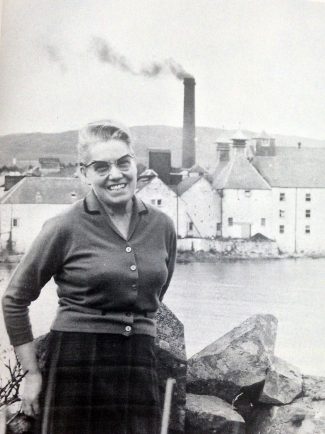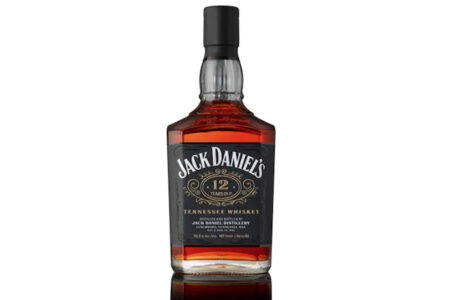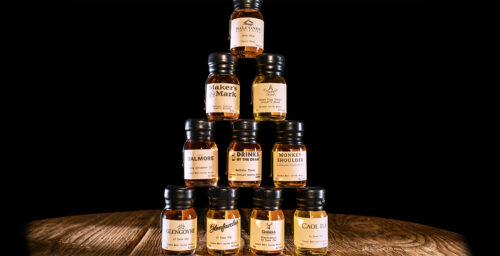
Peated whisky has long been associated with manliness. Smoky single malts are marketed as “big,” “burly,” and “intense.” Peat-heavy blends are plastered in images of rugged fishermen, frostbitten and clenched-jawed, nothing but a wool sweater and the faint reek of peat standing between them and the icy embrace of the North Sea.
Laphroaig, one of the most venerable Islay distilleries, is known as the peatiest of them all. Their entry-level single malt, the delicious Laphroaig 10 Year, might hold the dubious honor of turning more people off of Scotch whisky than any other dram.
Yet behind all that aggressive smoke and blustery masculinity, Laphroaig owes its existence to none other than a woman who was the 1930s equivalent of a summer intern: Bessie Williamson, a temporary secretary who would go on to lead Laphroaig to decades of dominance in the single malt category.
Bessie seemed to know she was destined to be a career woman. She completed a teaching degree in 1932, working all the while as an office assistant in an accounting office. Then, she took a job as a typist at Laphroaig in 1934. It was intended to be nothing more than a temporary summer job, but Laphroaig’s owner, Ian Hunter, saw something in her that made him take her under his wing.
She was quickly promoted to office manger, and after Ian suffered a stroke in 1938, she began to take a bigger leadership role in the company. In 1954, when Ian died childless (the last of his lineage, who had founded Laphroaig in 1815), he left the company to Bessie.
Bessie saw the writing on the wall: Selling exclusively to blenders just wasn’t going to cut it. To survive in a more competitive marketplace, Laphroaig needed to develop a compelling brand for its single malt. So she hit the road, touring the U.K. and North America to spread the gospel of single malt as an official representative of the Scotch Whisky Association. The strategy worked: demand for Laphroaig’s single malt soared, and the company’s reputation and market share across the Atlantic exploded.
Until 1972, Bessie guided Laphroaig through decades of change, remaining committed to investing in the Islay community all the while. When Laphroaig was acquired in 1972 by Johnston & Co. Ltd., they found an overstaffed company full of redundant positions. It appeared that Bessie had done everything she could to employ any locals who wanted work, regardless of whether or not the company had work that needed doing. And that’s the kind of attitude that makes the Scotch whisky industry – and Bessie Williamson – special.



